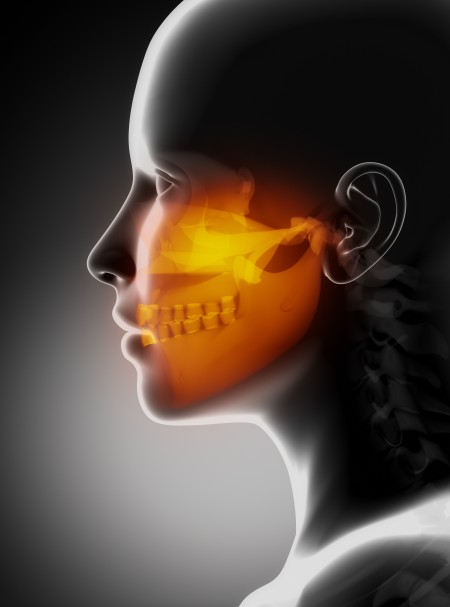Jaw surgery, known as orthognathic surgery, is reconstructive surgery of
the upper and/or lower jaw(s) to correct abnormal jaw
relationships. Orthognathic surgery is needed when jaws
don’t meet correctly and/or teeth don’t seem to
fit with jaws. Teeth are straightened with orthodontics and
corrective jaw surgery repositions a misaligned jaw. This not
only improves facial appearance, but also ensures that teeth
meet correctly and function properly. Jaw surgery may be used
to correct difficulty in eating, speaking and breathing. Jaw
surgery is often performed to correct a fractured or
misaligned jaw or for cosmetic reasons.
known as orthognathic surgery, is reconstructive surgery of
the upper and/or lower jaw(s) to correct abnormal jaw
relationships. Orthognathic surgery is needed when jaws
don’t meet correctly and/or teeth don’t seem to
fit with jaws. Teeth are straightened with orthodontics and
corrective jaw surgery repositions a misaligned jaw. This not
only improves facial appearance, but also ensures that teeth
meet correctly and function properly. Jaw surgery may be used
to correct difficulty in eating, speaking and breathing. Jaw
surgery is often performed to correct a fractured or
misaligned jaw or for cosmetic reasons.
Jaw surgery is performed by an oral and maxillofacial surgeon in a professional setting generally under general anesthesia. In preparation for your surgery, the patient undergoes a physical examination to ensure that you are in good health. Jaw surgery resolves those problems by bringing facial structures into balance.
Who Needs Orthognathic Surgery?
People who can benefit from orthognathic surgery include those with an improper bite or jaws that are positioned incorrectly. Jaw growth is a gradual process and in some instances, the upper and lower jaws may grow at different rates. The result can be a host of problems that can affect chewing function, speech, long-term oral health and appearance. Injury to the jaw and birth defects can also affect jaw alignment. Orthodontics alone can correct bite problems when only the teeth are involved. Orthognathic surgery may be required for the jaws when repositioning is necessary.
Difficulty in the following areas should be evaluated:
Difficulty in chewing, biting or swallowing
- Speech problems
- Chronic jaw or TMJ pain
- Open bite
- Protruding jaw
- Breathing problems
Any of these symptoms can exist at birth, be acquired after birth as a result of hereditary or environmental influences or as a result of trauma to the face. Before any treatment begins, a consultation will be held to perform a complete examination with x-rays. During the pre-treatment consultation process our patients are encouraged to ask any questions that they may have regarding their treatment. It is our goal to ensure patients are fully informed about the aspects of their care so together with our dental team, decisions to proceed with treatment can be made together.
Technology & Orthognathic Surgery
Dr. Lee uses three-dimensional models to show you exactly how your surgery will be approached. Using comprehensive facial x-rays, we can show you how your bite will be improved and even give you an idea of how you’ll look after surgery. This helps you understand the surgical process and the extent of the treatment prescribed. Our goal is to help you understand the benefits of orthognathic surgery.
Jaw surgery is commonly used as a final step in orthodontic care for adults and children. Patients typically require six months to one year of orthodontia before having jaw surgery. Jaw surgery can improve your facial proportions and give your face an overall softer, less angular look. In this procedure, the jaw is shaved down without disrupting your natural bite. In case of lower jaw surgery, the rear part of the bone is separated and positioned backward or forward as required. Jaw surgery is a procedure which allows the jaws to be positioned properly so that the teeth can fit together.
If you are a candidate for corrective jaw surgery, Dr. Lee will work closely with your dentist and orthodontist during your treatment. The actual surgery can move your teeth and jaws into a new position that results in a more attractive, functional and healthy dental-facial relationship.